Cooking an evening meal, I reach for the oregano and then for the thyme. As the herbs start to work out where they are, why they’re here and what they’re meant to be doing, a familiar but confusing aroma issues. This doesn’t smell so much of my dinner as my beehive. And not in that cooking-with-honey way.
Thymol. That’s it. An aromatic compound derived from Thyme, also known as 2-isopropyl-5-methylphenol and, as far as my bees are concerned, the scourge of their hive. My hive and surrounding area now smell very strongly of thymol as my bees do their level best to scrape it out and spit and smear it on every leaf and branch outside the hive. Anywhere as long as it’s not in their home.
Closing up the hive after I put it in, they started to catch on that something wasn’t right. I’ve never seen them make such a fuss. Bottoms in the air, thorax streatched, fanning at full tilt. Nasonov glands too, probably. It was audible at a few paces.
I can’t blame them, too much thyme can ruin a meal. And to find about a tonne of refined thymol dumped in your kitchen wouldn’t be nice. I would feel sorry for them were they not being so outrageously over-dramatic. But it’s for their own good.
The Birds and the Bees
No earnest discussion about the birds and the bees would be complete without what can go wrong. Diseases, parasites and so on. It’s the very last thing I’d like to think about.
But it was amongst some of the first things. I attended a talk given by my local bee-keepers association, compulsory attendance before joining the beginners beekeeping course. In it, apart from covering topics such as the quantities of honey and deep satisfaction one can expect beekeeping to bring, the subject of bee diseases, parasites, infections was covered in some graphic detail. There are some unpleasant things that can can happen, and some unpleasant things that might have to be done. You can look up ‘drone uncapping’ if you really want to. You probably don’t. But it’s a fact of life and far better mentioned before one gets involved.
Suffice it to say, not everyone who attended the talk went on to take the course.
I knew that varroa was a almost a certainty. It happens to every hive. I shouldn’t have been surprised to find it. But my small colony, who I’d watched nurse itself from a handful of bees to very nearly an armful, was coming along so well. There couldn’t possibly be anything wrong.
Something wrong
There could. More out of curiosity than rigorous scientific diagnostic intent, I put a varroa board in my hive. Smeared with vaseline to catch falling debris and slotted in under the hive beneath the mesh floor, I put it in and left it for a day or so. You’re meant to give it a week, but I was doing it out of curiosity rather than to get solid numbers and didn’t have the patience.
What drops out of the bottom of a beehive? All kinds.
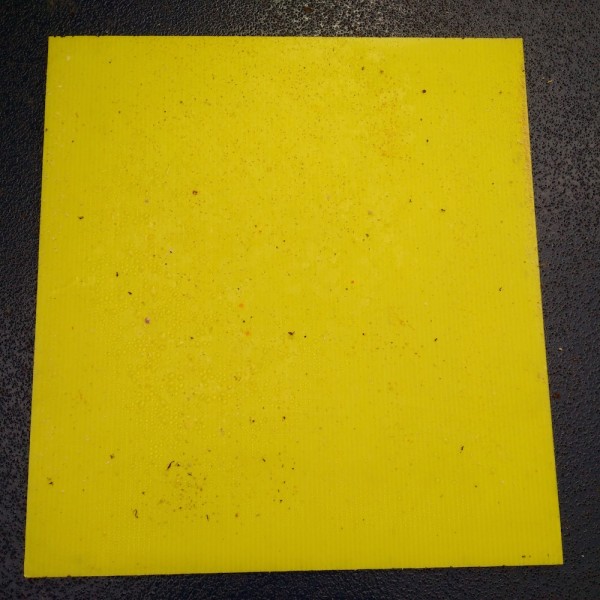
Pollen, carefully gathered and carelessly spilt.
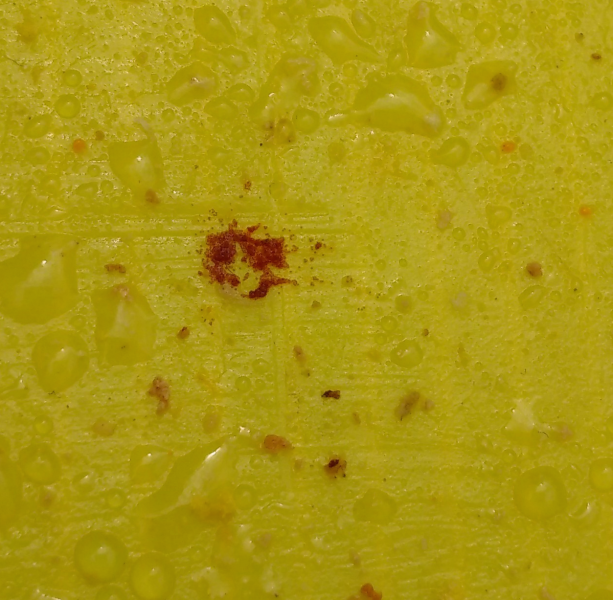
Ne’er do wells.
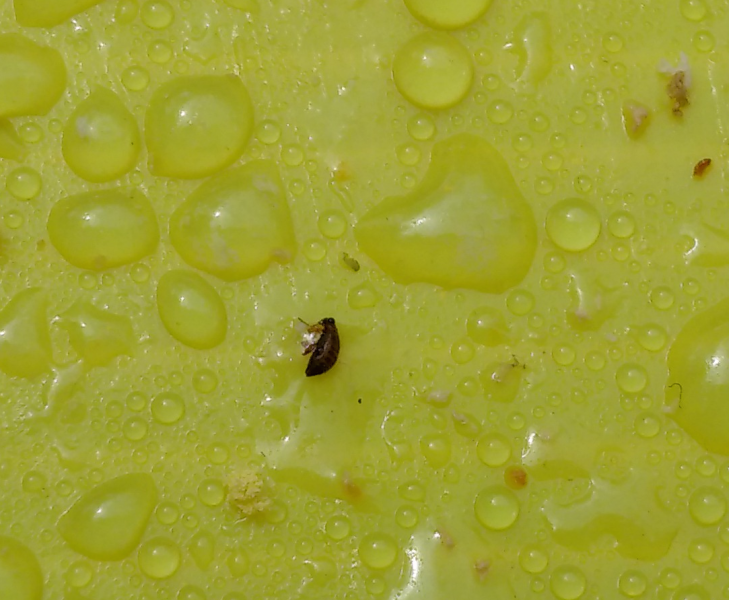
Bee legs.
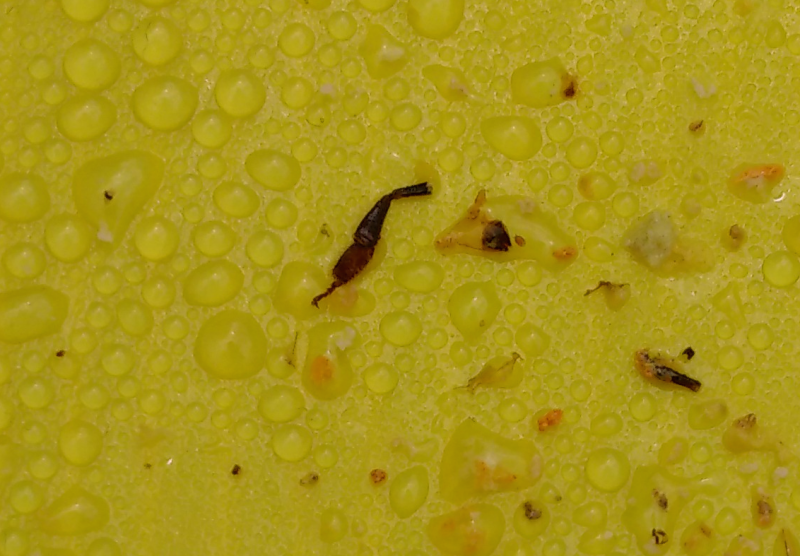
Beeswax from uncapping cells to get at their contents.
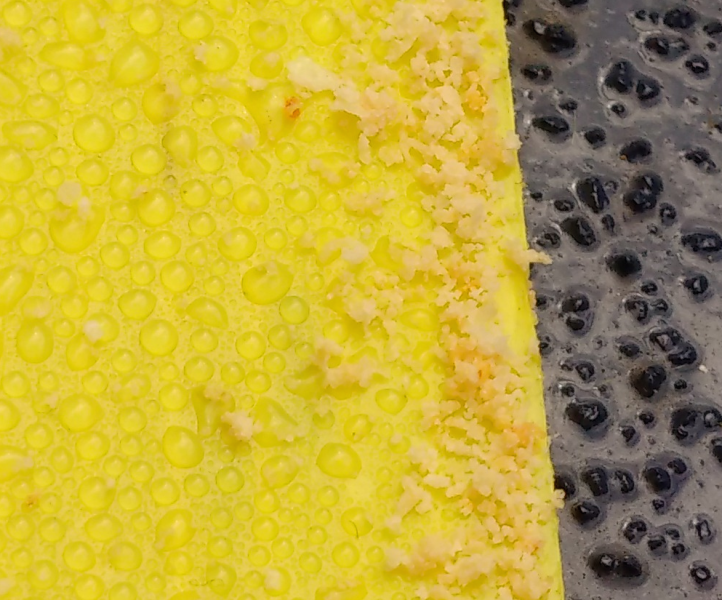
And yes, varroa mites.
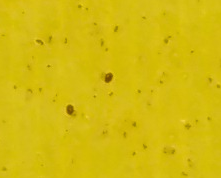
Varroa mites are little bastards. I counted that 8 dropped per 24 hours. That’s in the cause-for-concern range for the time of year. Something had to be done.
Something
There’s no way to fix varroa. The best solution is ‘integrated pest management’, which is a strategy of different treatments through out the year. One of the treatments, thymol, disrupts the lifecycle of varroa mites. Another treatment, a dusting of icing sugar, causes bees to groom each other and dislodge the parasitic mites. This occasion called for thymol.
I peeled the packet open and placed it in the hive. I made an eke to give a bit of vertical space, and closed up. The bees really weren’t very happy about this at all. Not in the slightest. To say the very least.
I put the hive back together and retired to a safe distance. Checking back later, the smell of thymol was overpowering from quite a distance. My poor bees were doing their level best, given difficult circumstances, to scoop out as much of this nasty substance and get it out of their home. I pictured microscopic mouthfuls smeared on neighbouring trees. But in the panic of the moment, thymol will have got itself everywhere and hopefully inconvenienced a few varroa mites.
A week later
A pack lasts a week and a single dose covers a 2 week gestation period. After a week it was time to put in pack number two. They had finished their plate and licked it clean.
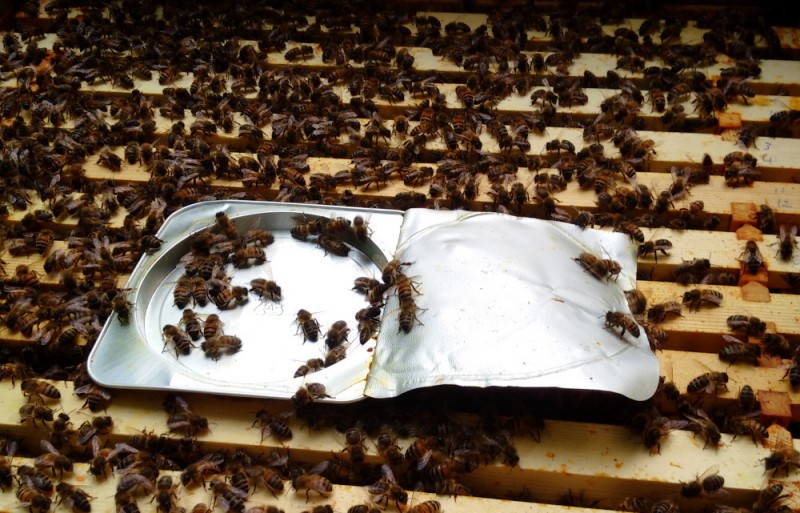
In some kind of act of self-sabotage my bees had glued the pack down firmly. It was very effectively stuck to the frames with propolis. The propolis that my bees produce is incredibly sticky and rather hard to shift.

Carnage
A lot of mites ended up on that board.
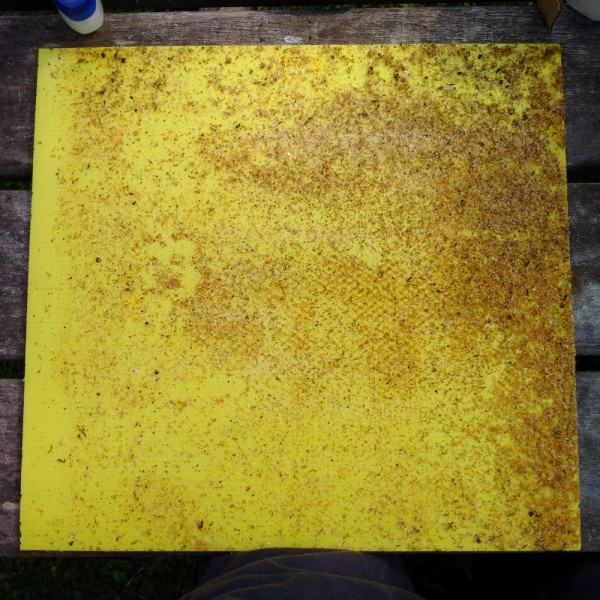
I tried to estimate how many mites there were.
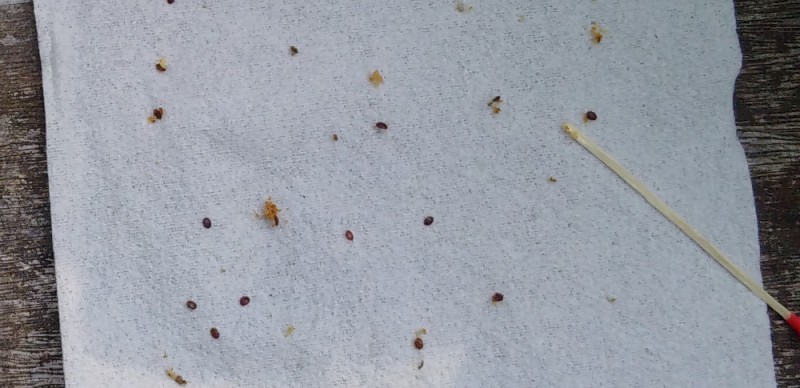
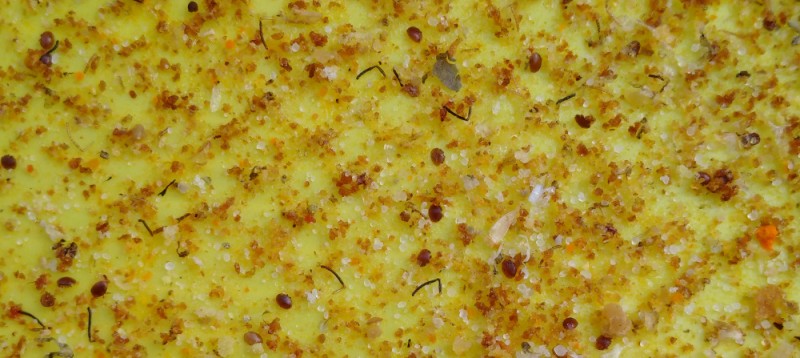
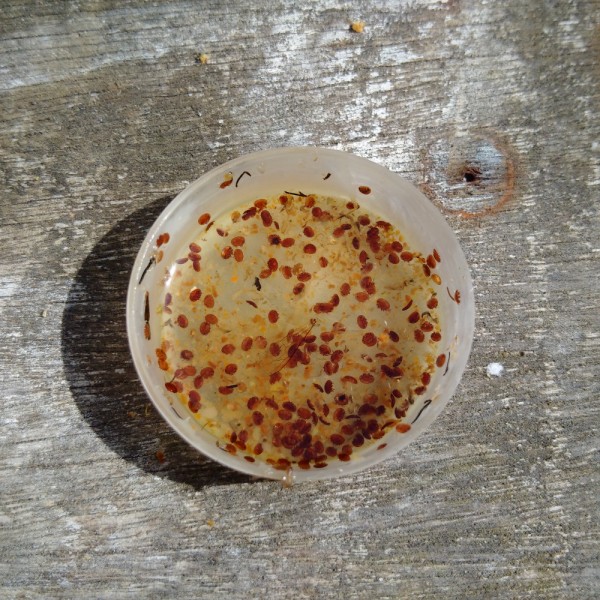
I gave up as it would have taken days.
I clearly had a bad infestation, and hopefully I’ve dislodged a large chunk of it. I feel really sorry for my bees toiling away with these things on their shoulders. I don’t know how they managed, but hopefully there’s now a burden lifted.
No lasting damage
The instructions say that a thymol treatment can stop the queen laying. There weren’t many eggs soon after, but within a short while everything was back to normal. My bees seem well set up for their journey into the closing part of the year.
Read more about my bees.